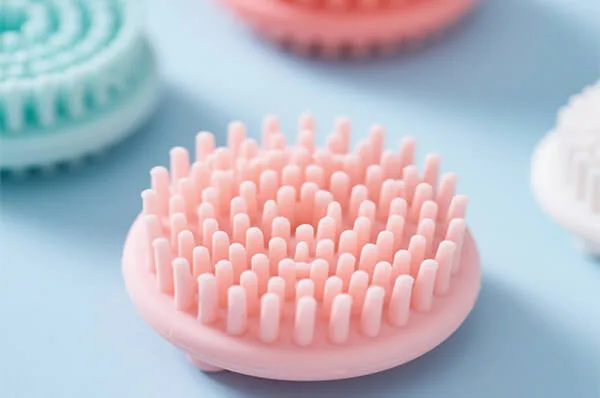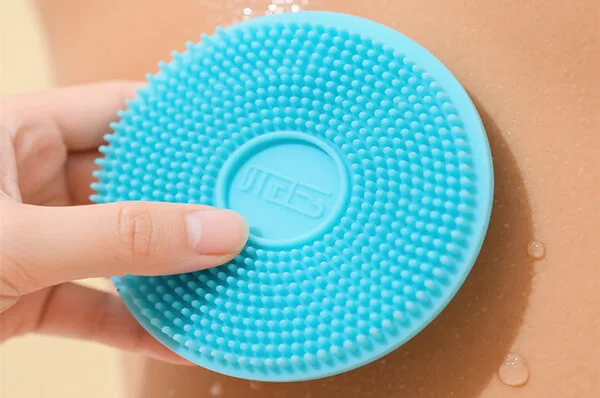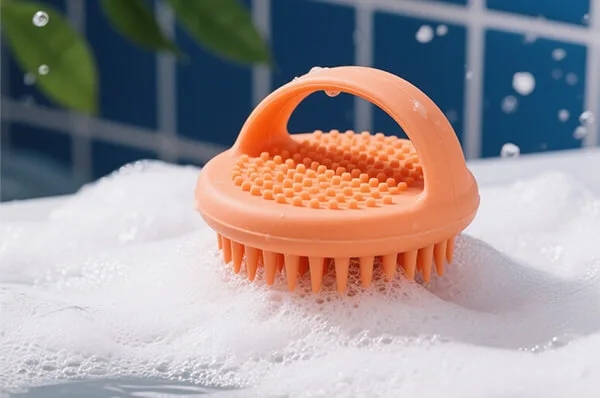- Have any questions?
- +86 19574832024
- admin@beaut-lohas.com
Silicone Shower Brushes
Increasing environmental awareness has played a prominent role in the importance given to proper disposal and possible recycling of day-to-day infringes such as silicone shower brushes. These silicone shower brushes, made for endurance and hygienic purposes during application, offer quite a number of recycling and reuse options if treated right.
The Need to Recycle and Reuse
Silicone falls under the classification of synthetic materials that are practically non-biodegradable under natural conditions. Such postuse disposal of silicone shower brushes by landfilling could contend for valuable space and be a source of environmental pollution over the years. Another fact is that energy and resources are consumed during the manufacture of silicone. Therefore, engaging their recycling and reuse methods may really be helpful in reducing waste and lessening the environmental impact throughout their life cycle.
Recycling Methods
1. Mechanical Recycling
Mechanical recycling is the most commonly employed tool against silicone waste. The procedure of recycling silicone shower brushes begins with their collection in a specially designated facility. The collected brushes are then sorted to remove any nonsilicone parts such as handles made of different materials. Next, the silicone components are shredded into small pieces. The shredded pieces can then undergo further processing using extrusion or injection molding to manufacture new silicone products. For example, recycled silicone could be used to make smaller household items like silicone spatulas, coasters, or even parts of other bathroom accessories. Appreciable merits of mechanical recycling lie in a high recovery rate of the original silicone material and relative ease of application. However, in terms of product quality, extra caution needs to be exercised in the control of any forward-processing operations to ensure that all recycled silicone adheres to the required standard for any new products; any contaminants or degraded material might influence the safety and performance of the final recycled items.
2. Chemical Recycling
Chemical recycling represents possibly the most sophisticated solution available for dealing with silicone shower brushes. This involves chemical breakdown of the silicone into its chemical components. Specific chemicals and processes are used to depolymerize silicone polymer chains back to monomers or oligomers. Consequently, these basic chemical building blocks can be purified and re-used to synthesize new silicone materials with properties akin to that of virgin silicone. For instance, certain research laboratories are studying high-temperature and high-pressure chemical treatments together with catalysts for efficient chemical recycling of silicones. The key advantage is that chemical recycling could lead to better-quality recycled silicone that may pass for even more demanding applications, including possibly those involving medical-grade silicone goods or components for electronics. The downside is that chemical recycling tends to be more complicated and expensive than mechanical recycling, with greater specialized equipment and chemical know-how.
3. Manufacturer Take-Back Program Recycling
Many manufacturers have recently begun to realize the relevance of sustaining their products and have begun to implement take-back programs. The consumer can return silicone shower brushes to the manufacturer directly, or the brushes are gathered through designated collection points. The manufacturers then recycle these brushes according to the methods they deem appropriate. These manufacturers may be interfacing with an external recycling facility, or they may have the internal recycling capabilities. This would give a measure of certainty to the proper recycling of silicone and also helps to further the brand image and encourage consumers to be more ecologically conscious. A few manufacturers might also provide rewards like discounts on future purchases for those who return used appliances.
Reuse Options
1. Upcycling by DIY Enthusiasts
UXers can think outside the box when they upcycle silicone shower brushes. For example, they can remove the bristles from an old brush and use them to create a scrubbing tool to clean household items from pots and pans to fine glass surfaces. A hook or string can be added to the shower brush handle, allowing it to be reused as a hanger for towels or other bathroom accessories. Some people may choose to upcycle the entire brush, with a thorough clean-up and alteration, as a decorative display in their bathrooms, painting it or embellishing it further. This type of upcycling creates new life for the old brush while adding a personalized touch to the home decor.
2. Donation or Exchange
Should the silicone shower brush be in good condition and not wanted by the owner, it may be given to local charities, community centers, or shelters. A clean and functioning silicone shower brush could easily brighten the day of many people unable to purchase bathroom accessories. There are also websites dedicated to the exchange of gently used household goods, including shower brushes. In this way, the item is sold to a new owner, thereby extending its life cycle rather than heading for the landfill.
3. Industrial Repurposing
Used shower brushes made from silicone can, under certain circumstances, be re-purposed in an industrial or commercial set-up. An example is beauty salons or spas where large quantities of disposable or single-use items are in use-cleaned and sterilized silicone shower brushes can be put to work cleaning equipment or as tools in the application of some treatments. In manufacturing, brushes can be used for light cleaning in situations where a soft and durable scrubbing tool is desired.
Barriers and Future Directions
Though there are promising avenues to recycling and reusing pathways, conversely, there are other conflicting challenges. One of the hurdles is low awareness of the recycling of silicone products among consumers. Many consumers throw away silicone shower brushes thinking that it has ended the life cycle of the product. With the above issues in mind, the recycling of silicone is still not an established industry like other materials that we can consider more common, such as plastics or metals. Investments should be made in the development of recycling industries and research that will have favorable economic returns and efficiency with respect to processes for recycling silicone.
In the foreseeable future, it is anticipated that with more awareness and promotion of sustainable practices, more consumers will join in awareness of recycling and reusing initiatives for silicone shower brushes. Simultaneously, with ongoing technological developments in the recycling line, more and more targets on less environmental impacts and maximum value utilization for silicone materials will be realized.
Thus, disposal and upkeep of silicone shower brushes present important aspects for waste reduction and environmental sustainability. By examining various potential recycling methods and inventive modes of reuse, we can guarantee that these beneficial items create a positive life impact from inception to decay.




